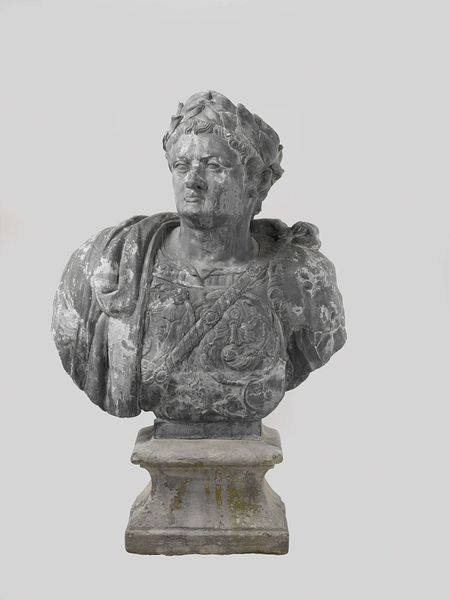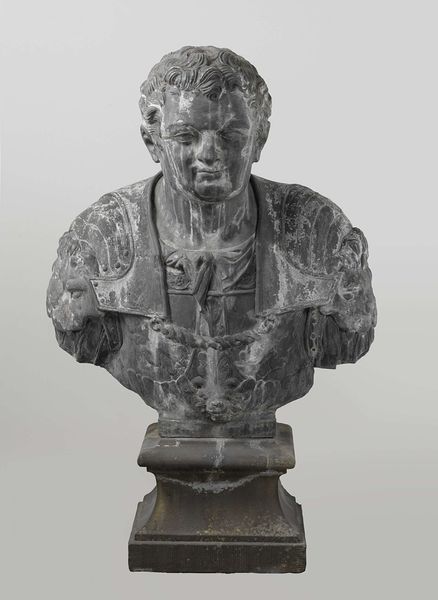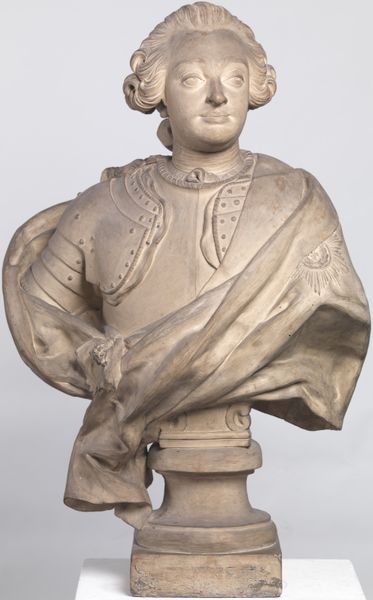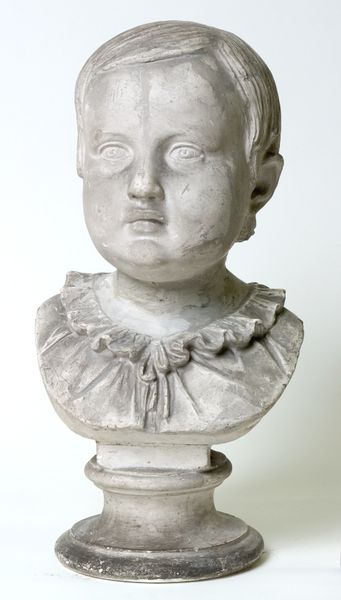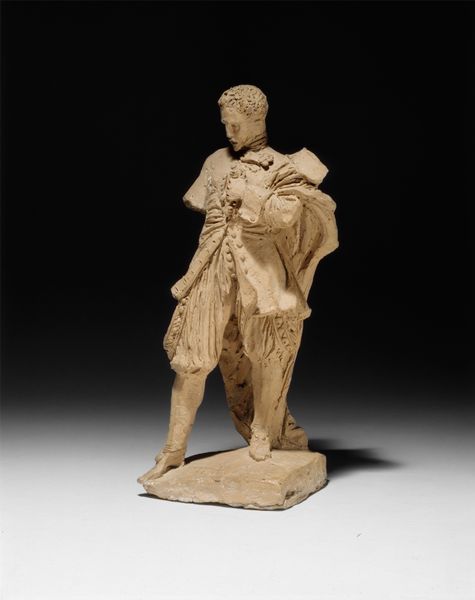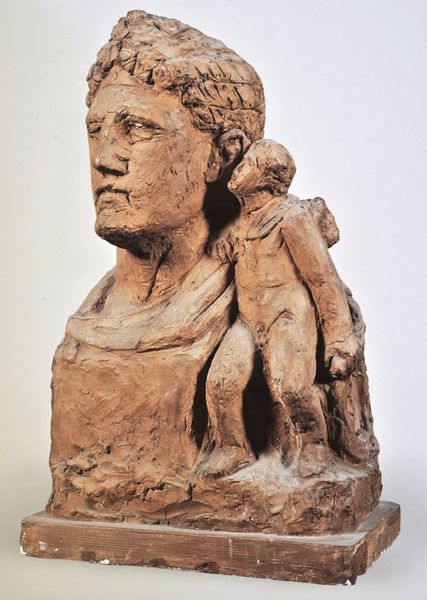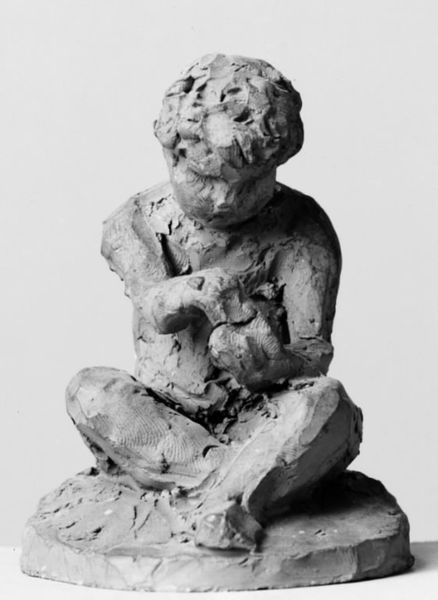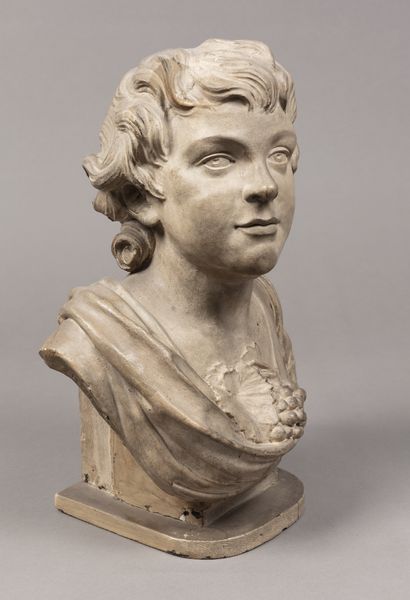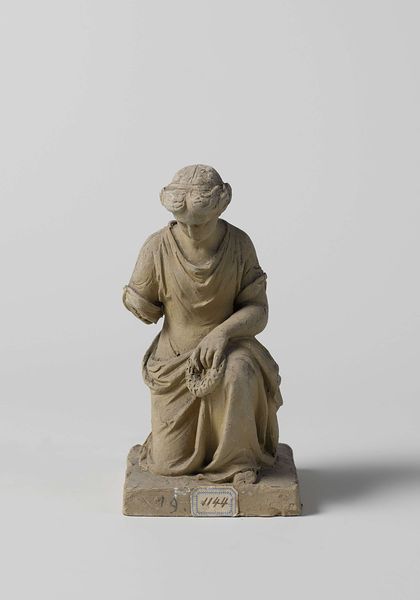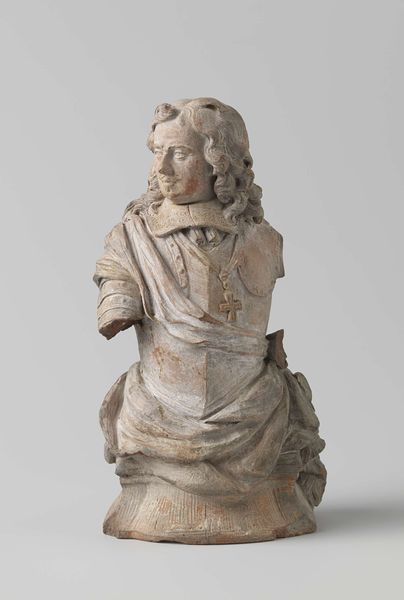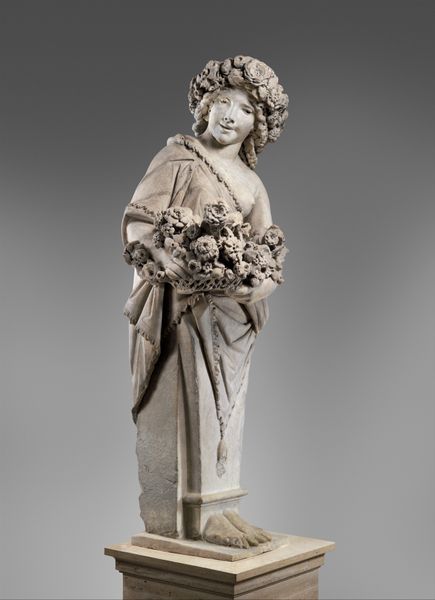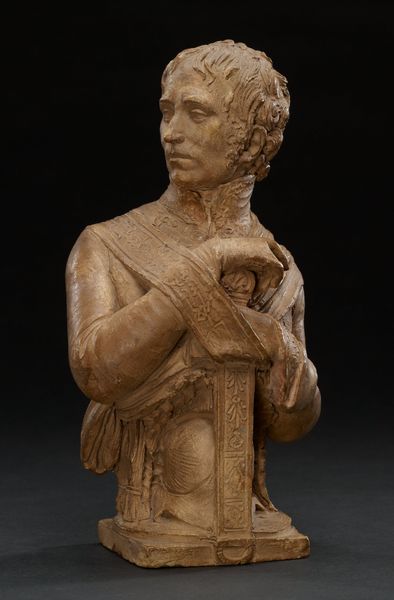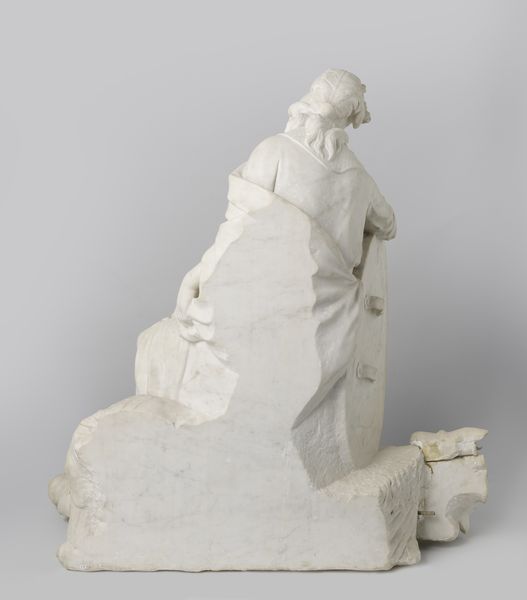
sculpture, marble
#
portrait
#
sculpture
#
classical-realism
#
ancient-mediterranean
#
sculpture
#
history-painting
#
marble
Dimensions: height 84 cm, weight 175 kg, width 43 cm, depth 28 cm, height 116 cm
Copyright: Rijks Museum: Open Domain
Bartholomeus Eggers created this marble bust of Gaius Julius Caesar Germanicus, better known as Caligula, in the 17th century. The cool, grey marble lends a formidable yet distant presence to the figure. Note how Eggers skillfully used the stone's texture to articulate the intricacies of Caligula's armor, contrasting sharply with the smoother surfaces of his face and neck. The composition is rigidly symmetrical, lending a sense of classical order, yet the lifelike rendering introduces a tension that unsettles any straightforward reading of power. Eggers uses the traditional form of the bust to evoke classical authority, but simultaneously destabilizes it, prompting questions about how power is represented and perceived. The semiotic interplay between the medium, form, and subject invites continuous interpretation.
Comments
rijksmuseum about 2 years ago
⋮
Caligula was the third emperor after Julius Caesar. His reputation is far from enviable: he is described as cruel and even insane. Caligula was his nickname; it means a small shoe or boot. It may have referred to the small army boots that were made for him when he accompanied his father’s legions as a boy.
Join the conversation
Join millions of artists and users on Artera today and experience the ultimate creative platform.
